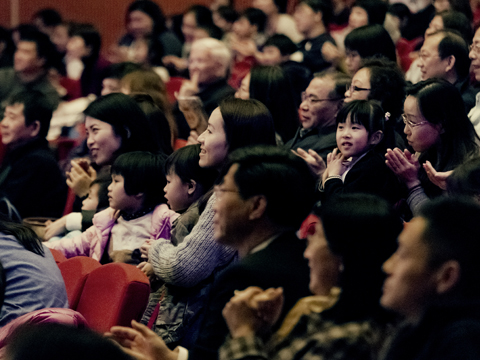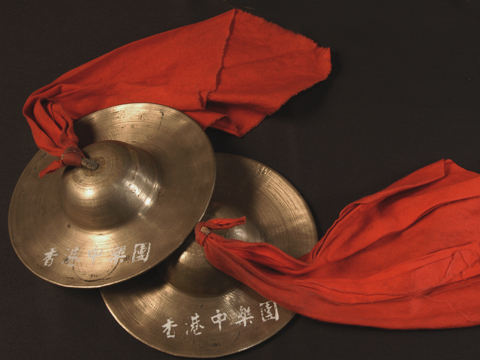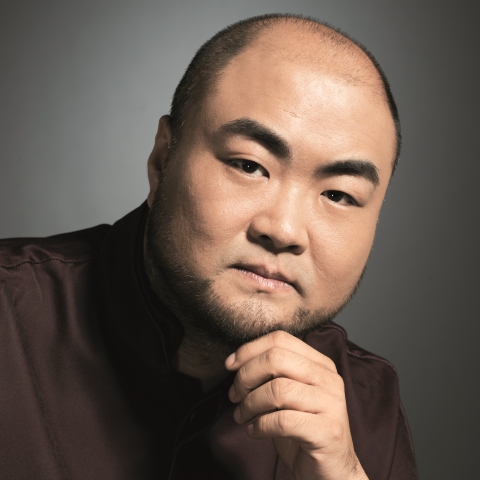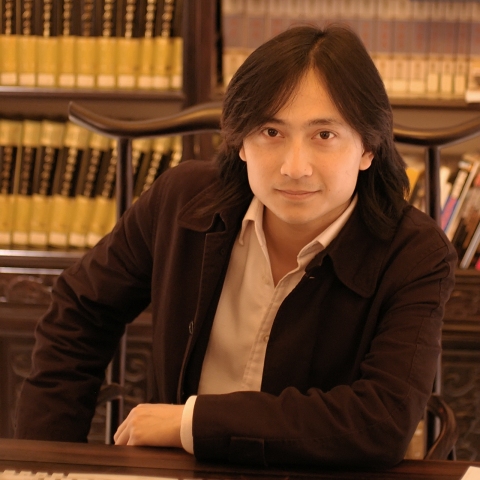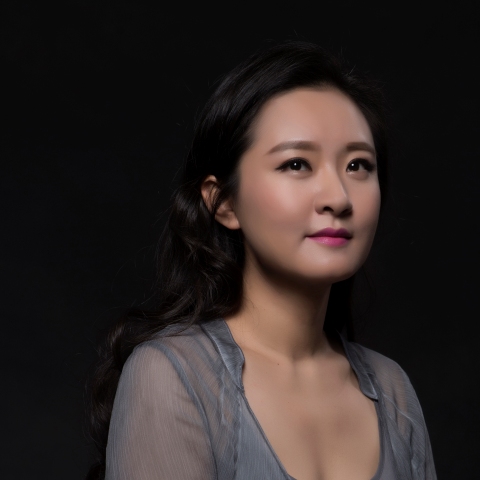
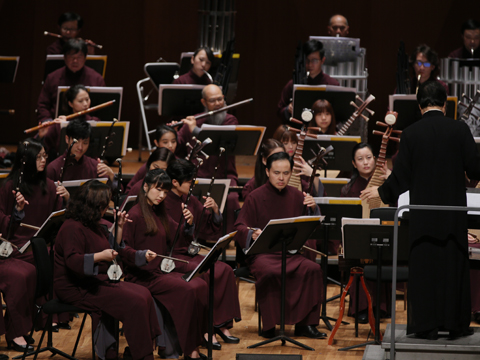
HKCO
Hong Kong Chinese Orchestra Environmental, Social and Governance Artistic Director and Principal Conductor for Life Orchestra Members Council Advisors & Artistic Advisors Council Members Management Team Vacancy Contact Us (Tel: 3185 1600)

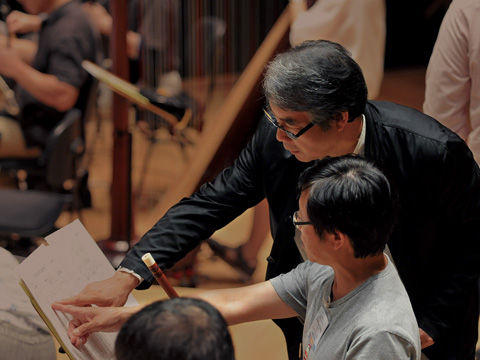
What's On

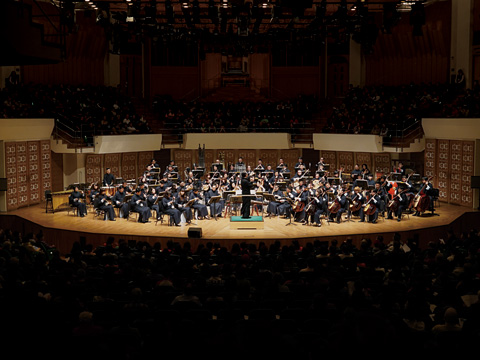
Concerts

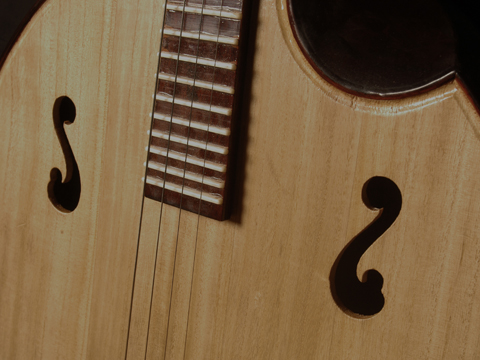
Education
The HKCO Orchestral Academy Hong Kong Youth Zheng Ensemble Hong Kong Young Chinese Orchestra Music Courses Chinese Music Conducting 賽馬會中國音樂教育及推廣計劃 Chinese Music Talent Training Scheme HKJC Chinese Music 360 The International Drum Graded Exam

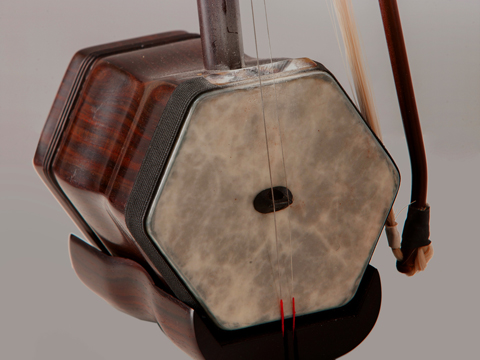
Instrument R&D
Eco-Huqins Chinese Instruments Standard Orchestra Instrument Range Chart and Page Format of the Full Score Configuration of the Orchestra
40th Orchestral Season
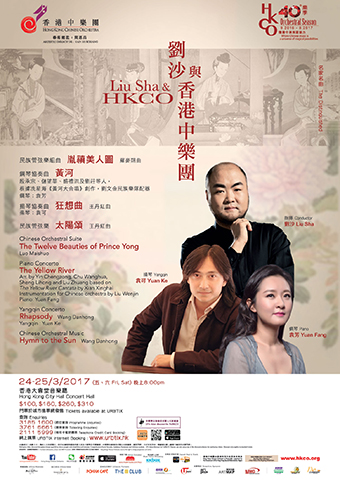
Liu Sha & HKCO
8:00 pm
Piano: Yuan Fang
Ladies of the Qing court, waters of the Yellow River, the sun of exotic Sichuan and a rhapsody on the dulcimer
Conducting in this concert is Liu Sha of the China National Traditional Orchestra, a preeminent figure among the younger generation of conductors in China. As a visionary in the field, he has been actively commissioning and performing new works by young composers, which in turn helped to explore the future roadmap of Chinese orchestral music. The choice of music reflects his innovative programming. The first is The Twelve Beauties of Prince Yong by Luo Maishuo from Beijing, which is inspired by a painting scroll in the collection of the Palace Museum of Beijing. Its vivid depiction would take the audience to visit the subjects in the secluded chambers of the Qing Dynasty. Next on the list are two works by Wang Danhong, one of the most active composers of the younger generation in China today: the yangqin concerto, Rhapsody, and the totemic work representing exotic Sichuan, Hymn to the Sun. Besides works by young composers, the concert also presents a landmark piece in modern Chinese music, The Yellow River piano concerto. Come roam in a musical fantasy that traverses the brave worlds of old and new!
Piano Concerto The Yellow River Arr. by Yin Chengzong, Chu Wanghua, Sheng Lihong and Liu Zhuang based on The Yellow River Cantata by Xian Xinghai Instrumentation for Chinese orchestra by Liu Wenjin
The first movement: Song of the Yellow River Boatmen
The second movement: Ode to the Yellow River
The third movement: Song of the Yellow River
The fourth movement: Defend the Yellow River
Piano:Yuan Fang
Chinese Orchestral Suite The Twelve Beauties of Prince Yong Luo Maishuo
Yangqin Concerto Rhapsody Wang Danhong
Yangqin: Yuan Ke
Chinese Orchestral Music Hymn to the Sun Wang Danhong
The first movement:Walking on the River
The second movement: Picking Up the Mountains
The third movement:A Missing Heart
The fourth movement:Hymn to the Sun
This piano concerto is adapted from The Yellow River Cantata by Xian Xinghai, with the Sino-Japanese War as its backdrop. The majestic Yellow River is a symbol of the Chinese people here.
Piano: Yuan Fang
The Twelve Beauties of Prince Yong is a set of twelve paintings on silk in the collection of the Palace Museum in Beijing.
This is a work commissioned by the conductor, Liu Sha. The composer has written two versions with different instrumentations. One is for double pianos, and is dedicated to Ms Zhang Qian; the other is for full-scale Chinese orchestra, and is dedicated to his good friend, Liu Sha. Both Zhang and Liu have been the source of inspiration and the driving force behind the writing of the piece.
The yangqin concerto, Rhapsody, is a lighthearted, dynamic work composed in April 2011. It adopts the rhapsody form and is characterized by a free-spirited way of expression.
Yangqin: Yuan Ke
Hymn to the Sun for Chinese orchestra is based on the folk music of ancient Bayu culture, that is, the region around Chongqing in Sichuan today.
Chinese Music Composition: Inspiration and Aesthetics
Sources of inspiration for Chinese music composition today are so diverse that the resultant work can carry distinctly different aesthetic properties. To truly appreciate their quintessential beauty, we need to approach them from different angles and levels. The four original compositions in the programme of the Liu Sha & HKCO concert are therefore good examples to illustrate these points.
The Beauty of Harmoniousness and East-West Fusion
The Twelve Beauties of Prince Yong, a suite composed by Luo Maishuo, is in four movements, each of three sections. This composition is inspired by, and corresponds directly with, a set of twelve Qing palace paintings bearing a similar title that is in the collection of the Palace Museum in Beijing. The compositional intent seems to be to translate the aesthetics of the traditional Chinese painting genre – portraits of ladies – into a musical soundscape. In other words, visual beauty is translated into aural beauty through music. The musical style is distinguished by the blending of harmony and lyricism, in a verisimilitude of the genre of Chinese literati paintings. Luo’s work emphasizes especially the melodiousness of Chinese music by adhering to the musical ideals of qing, wei, dan, yuan ("pure", "delicate", "muted" and "profound") in art music of the Chinese literati tradition.
The piano concerto The Yellow River is based on The Yellow River Cantata, a choral piece written by Xian Xinghai (1905 – 1945) during the Sino-Japanese War. The original choral work incorporated boatmen’s work calls, folk tunes and vernacular elements. By enhancing the instrumental sounds through the full-scale Chinese orchestra and the piano, the concerto arrangement highlights the mixed timbre, and throws back to the East-West cultural blending which started at the turn of the 20th century and morphed into the musical aesthetics of modern China.
Modern Aesthetics and Rustic Simplicity
The creative stimuli for the two pieces by young composer Wang Danhong are different again. The yangqin concerto Rhapsody represents the modern way of thinking, which is creatively a breakaway from the traditional. It combines pop rhythms and the compositional technique of the Western rhapsody in the hope of achieving the breakthrough. It may be described as a typical consideration of modern aesthetics.
Hymn to the Sun, Wang’s other piece, is a large-scale composition in four movements, approximately half an hour long. It is inspired by the ancient Bayu folk culture and the way of life of the working class in the region around what is Chongqing, Sichuan, today. The music is suggestive of the rich piquant flavours for which Sichuan cuisine is renowned. The opening movement Walking on the River is a bold rhythmic march for winds and percussion, and embraces the grandeur of the imposing landscape in the region. It is followed by Picking up the Mountain, a portrayal of porters heaving their load up and down the hill slopes, with a lively and invigorating tune. The mood then quietens with A Missing Heart, a clear contrast between the second and third movements. The soft lyrical notes evoke the memories of loved ones and the yearning grows. Finally, with full-blown emotions, Hymn to the Sun enters. This last movement shows a prominent folk influence, in both the melody of the tranquil theme in its introduction, as well as the style of the hymn-like percussion climax in its finale. The entire piece displays a rustic magnificence – sincere, guileless, earthy, robust and vibrant. The beauty of simplicity in Hymn to the Sun is the perfect complement to the beauty of harmoniousness in The Twelve Beauties of Prince Yong.
Towards a Colourful Montage
In today’s increasingly globalized environment and with the interactive cross-influence between different localities, ethnic customs and art growing at an exponential rate, the pool of creative concepts which composers of Chinese music can draw upon will continue to expand. The diverse stimuli behind the creation of the four compositions discussed may be seen as a mini-representation of some of the possible sources of inspiration for modern Chinese music. Programming the four works in one concert is putting together a colourful Chinese music montage. The pieces can be enjoyed as individual works of music or as a single composite of musical art, and such views may well prove interestingly different.
Your Support
Friends of HKCO
Copyright © 2025 HKCO
